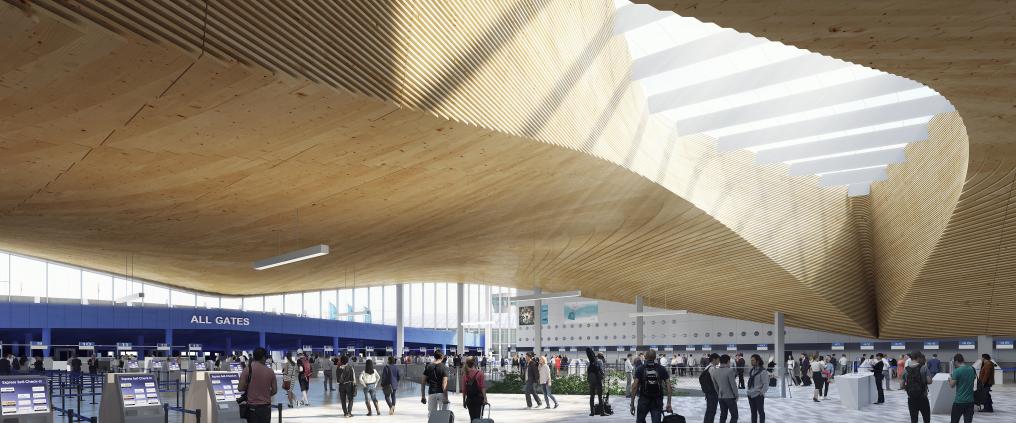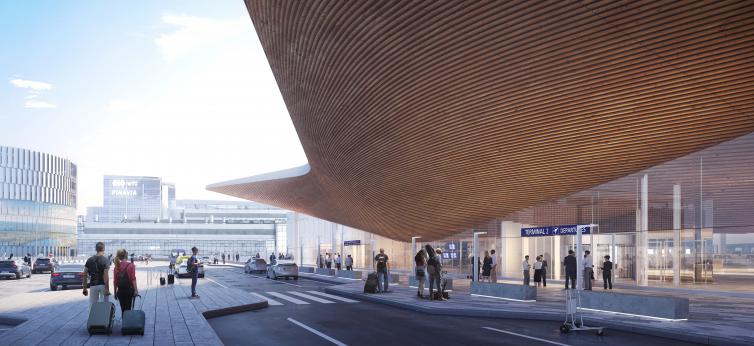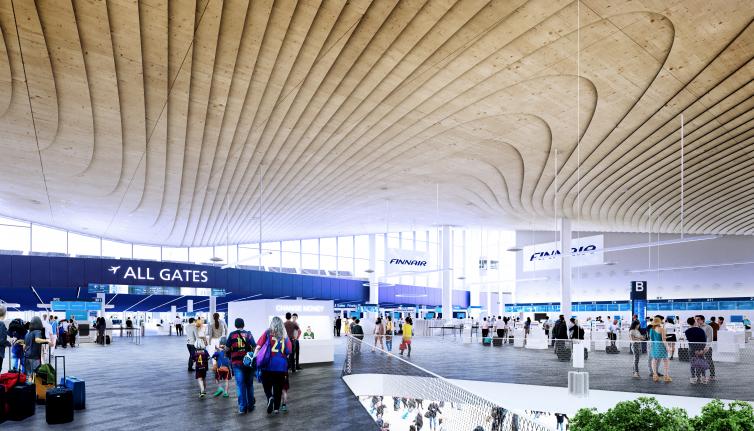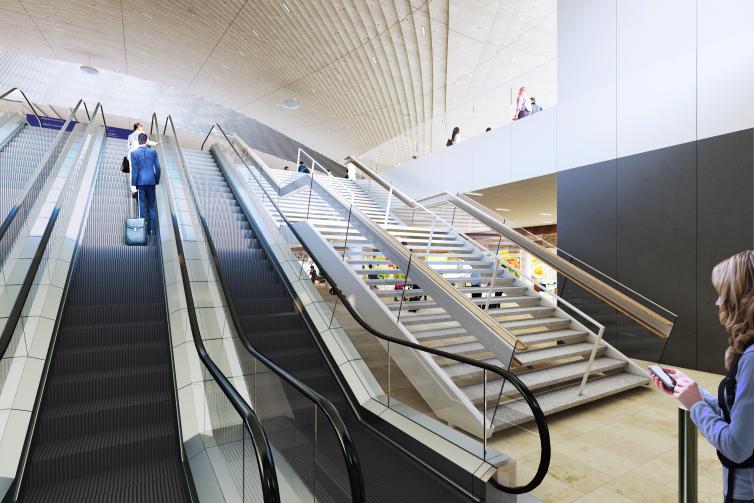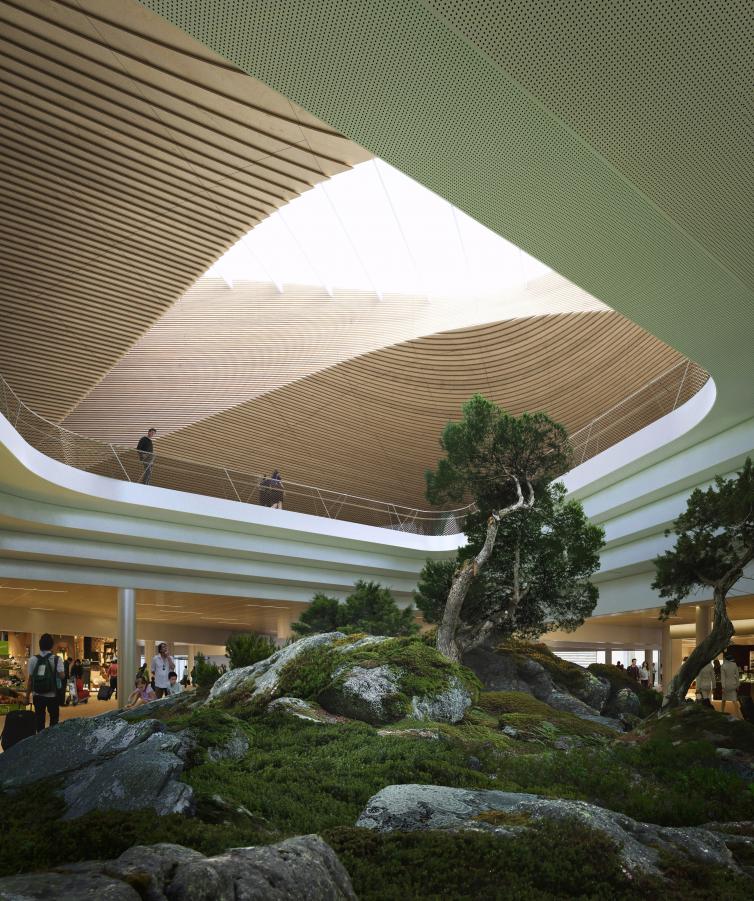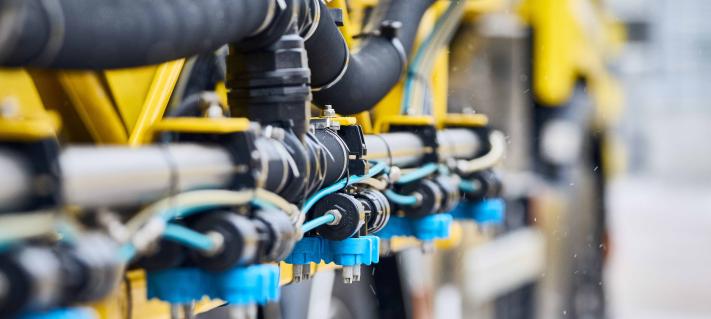Finnishness is the common thread running through the Helsinki Airport Development Programme. Finnish nature and know-how can be seen all over the airport. The wavy wooden ceiling of the arrivals and departures hall, which has already become iconic, is a display of the skill of Finnish carpenters.
“One of Finavia’s main goals for the project has been to highlight Finnish design and crafts expertise,” says Henri Hansson, Finavia’s Senior Vice President for Airport Infrastructure, Sustainability, Safety, Security & Compliance. The terminal is designed to feel like Finland.
“The Finnish wood used in the terminal’s ceiling is one of the factors that help Helsinki Airport stand out from other airports.”
Carrying out projects such as this domestically is an important value that Finavia has invested in.
“The high level of Finnish competence used in the development programme is an important source of pride for us. The domestic content of the EUR 1 billion development programme – that is, the share of the total investment taken by contracts with Finnish companies – is about 90%.”
Experts in special projects get to show their skills
The wooden ceiling was designed by ALA Architects’ Juho Grönholm, the principal designer of the Terminal 2 extension. The ceiling was made by Raision Puusepät, a company that employs about 20 people. The previous projects of the company include the wooden parts of Helsinki Music Centre’s concert hall.
Before the wooden ceiling, the company had already made furniture for departure gate areas and a wall relief for Helsinki Airport. In addition to the massive wooden ceiling, the company made the blue arch above the security control area and new check-in counters for the Terminal 2 extension. According to Jarmo Yrjölä, the Managing Director of Raision Puusepät, the work now carried out is the largest project in the company’s history.
“We are happy to do projects where we can challenge our expertise. It’s rewarding to see this impressive result from the perspective of a carpenter and how the three-dimensional pieces of the puzzle fit together so well that the makers can be proud of the work done,” Yrjölä says.
The giant jigsaw puzzle requires great precision
The ceiling consists of 500 wooden elements that weigh 1,500 kg. They are all unique – no two elements are alike.
“Only during the installation of the first elements was it possible to confirm that the elements really fit together. The first six elements showed us that,” Yrjölä says.
Yrjölä says that Principal Designer Juho Grönholm’s drawings of the surfaces were used to create a virtual 3D model, which was then used to design the frame along with its attachments, surfaces and details.
“Each part has its own code that was used to assemble the elements in the correct order and on the basis of which the parts can be replaced with new ones if necessary,” Yrjölä says.
The elements were made of cross-laminated timber (CLT) that uses Finnish spruce on the surface. The cross-laminated timber does not change shape over time, which is important for the design of the ceiling. The completed parts were transported from Raisio to Vantaa by a full trailer combination, 12 at a time.
“The height of the transport was so great that it could not fit under the bridges on the motorway, so we had to use small roads all the way to Ring Road III.”
A successful outcome with mostly domestic materials and labour
Finavia’s development programme employs people in Finland both directly and indirectly. During construction, the employment impact of the entire Helsinki Airport Development Programme is 16,600 person-years.
The design work of the development programme is Finnish, as is a large share of the materials. The architecture firm ALA designed the new departures and arrivals halls of the Terminal 2 extension along with their security control areas and the multimodal travel centre, which includes a bus area, a taxi area and short-term parking.
As the Principal Designer of the architecture firm HKP, Mikko Suvisto was responsible for the design of the new parking hall P1/P2 and the new passageway to the train station on the Ring Rail Line. HKP will continue its work at the airport by designing the alterations to the current terminal. The companies responsible for the technical design of the Terminal 2 extension and the project supervisors of the extension are Finnish.
“It's great that so many Finnish companies have been able to meet the strict requirements of the development programme,” says Hansson.
The Airport of the Future article series shares stories and interesting details behind the Helsinki Airport Development Programme. Helsinki Airport is in the middle of the largest extension project in its history. The goal of Finavia’s giant investment is to develop the airport’s services and customer experience as well as strengthen Helsinki Airport’s position as one of Europe’s leading transfer airports.
We will open the doors and welcome all to the Airport of the future 1st of December 2021.
